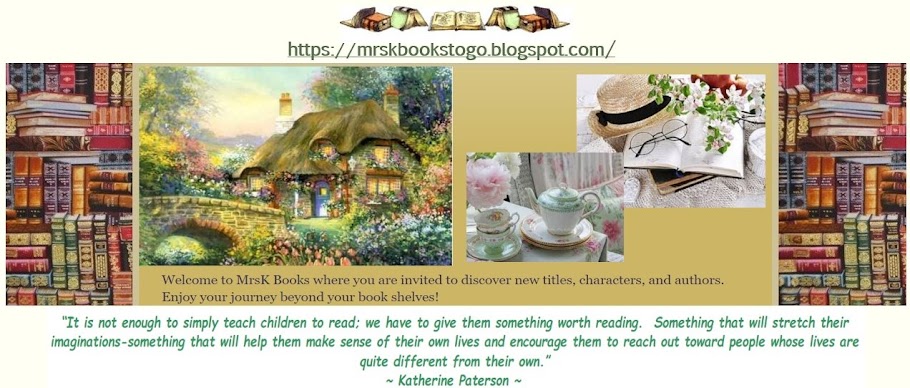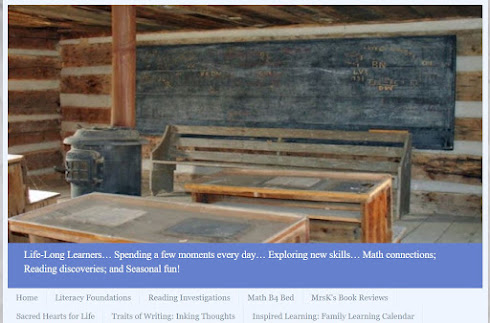ISBN: 9781477826300
Publisher's Synopsis:
Pipsie loves everything wild—from dragonflies to oceans to tall, tall
trees. She also loves solving mysteries. That’s why she’s a nature
detective! When she and her turtle, Alfred, notice that their new
friend, Frannie the caterpillar, has vanished, Pipsie is on the case.
She grabs her magnifying glass, goes to her tree-house headquarters, and
begins to search for clues. It’s time to make this mystery history!Bursting with personality, this engaging story introduces a spunky new girl detective, a scooter-driving turtle who loves to eat, and a string of simple scientific clues that will keep kids turning the pages until the mystery is solved. Two pages of nature fun facts at the end of the story offer even more information for young nature detectives.
MrsK's Review:
Pipsie is a nature detective. She is so inquisitive, so determined, and very savvy as a detective. Her mission is to find her friend Frannie. Now Frannie was an unexpected friend who showed up one morning on Alfred Z Turtle (not just her pet but her assistant, her partner, her catalyst)...
"As sure as the shell on his back,
there were Yellow and Black stripes on his head!"
As their friendship "transforms," it is with dismay that seven days later Frannie goes missing. "With out a doubt," Pipsie and Alfred will search in "dark and icky places... sweet and sticky places... inside and outside..." there is no place they won't search!
This delightful mystery is quite "snappy." Pipsie overflows with personality. The scientific explanation of a caterpillar's metamorphosis into a butterfly is detailed with perfected word choice, journal illustrations (of course a detective keeps a detailed notebook of inquiry), and factual information that matches the audience's sense of discovery. Leaving no learning unavailable, there is six fun facts for discovery, as well as a Pipsie learning link for "closer" inspection. The attention to detail, especially in the journal entries provides endless opportunities for reader's to discuss and choose to copy into their own "nature detective" notebooks.
A must read... re-read... read again... and share adventure,
MrsK
Delightfully inspiring, alluring, and perfected for all audiences.
click the above link for Pipsie discovery fun
Meet the Author:These days Rick spends his time creating marketing and advertising campaigns. He writes and art directs and produces all forms of advertising for print, radio, and TV. He has worked with and directed actress S. Epatha Merkerson (Lt. Anita VanBuren, Law and Order) and Steve Allen (comedian and talk show host) and has won several major advertising awards for his creative work, including two east coast ADDY awards.
Fatherhood started Rick on the road to writing books! He wrote personal stories and created books for his kids. Pipsie is a friend Alexis made up when she was little, and she appeared in stories Rick and Alexis used to write and draw—The Adventures of Pipsie and Alexis! Alfred Z. Turtle who is Pipsie’s sidekick, is the cousin of Matt’s pet turtle, Alfred E. Turtle.
Meet the Illustrator:
Hello! My name is Tracy Nishimura Bishop and I am a children’s book illustrator working in San Jose, CA.
I attended San Jose State University and enrolled in the
animation/illustration program because I wanted to become a Disney
animator. I quickly discovered that I didn't like doing animation at all
but loved telling stories with illustrations instead. After graduating,
I worked as a designer for ten years at places like Gymboree and the
Children's Discovery Museum of San Jose.
These days you can find me working at home drawing
and painting away. My daily inspirations are my son, husband, and a
hairy dog named Harry.
Some facts about me:
- I got hooked on drawing when I won an art contest in Kindergarten.
- I grew up in a U.S. Army base in Japan from the age of 5 through 13.
- As a kid, I LOVED reading lots of Japanese manga instead of English books. This became a problem at school when my Japanese became better than my English.
- I have an ever-growing collection of pencils and pens.
"I received this book for free for this review."




No comments:
Post a Comment